Medical Disclaimer: This content is for informational purposes only and does not substitute professional veterinary advice. Always consult your veterinarian for diagnosis and treatment options tailored to your dog.
Table of Contents
Introduction
If your dog struggles to get up, seems stiff after a walk, or avoids stairs, it could be more than just old age it might be canine hip dysplasia. As a veterinarian in general practice, I’ve diagnosed this condition in everything from bouncy Golden Retriever puppies to senior mixed breeds. It’s tough seeing pets in pain, but the good news is that early intervention can make a big difference.
Canine hip dysplasia is one of the most common orthopedic issues we see in dogs, especially large breeds. Whether you’re worried about your puppy’s odd gait or looking for ways to ease your senior dog’s discomfort, this guide walks you through what you need to know from symptoms and costs to proven treatments and prevention strategies.
Key Takeaways
- Canine hip dysplasia is a hereditary joint condition affecting dogs of all sizes, especially large breeds like Labradors and German Shepherds.
- Symptoms range from mild stiffness to severe lameness and can appear in puppies or older dogs.
- Diagnosis involves a vet exam and X-rays. Costs in Canada typically range from $300 to $600 for testing.
- Treatment options include weight management, pain relief, supplements, physiotherapy, or surgery like a total hip replacement.
- Preventive care balanced diet, controlled exercise, weight management, and responsible breeding can reduce the risk or delay onset.
- Many dogs with canine hip dysplasia live long, active lives with proper care and early intervention.
- Speak to your vet early if you notice signs like limping, bunny-hopping, or reluctance to run and play.
What Is Canine Hip Dysplasia?
Also visit: https://doglifeexpert.com/dog-seizures-in-2025-top-10-causes-treatments/
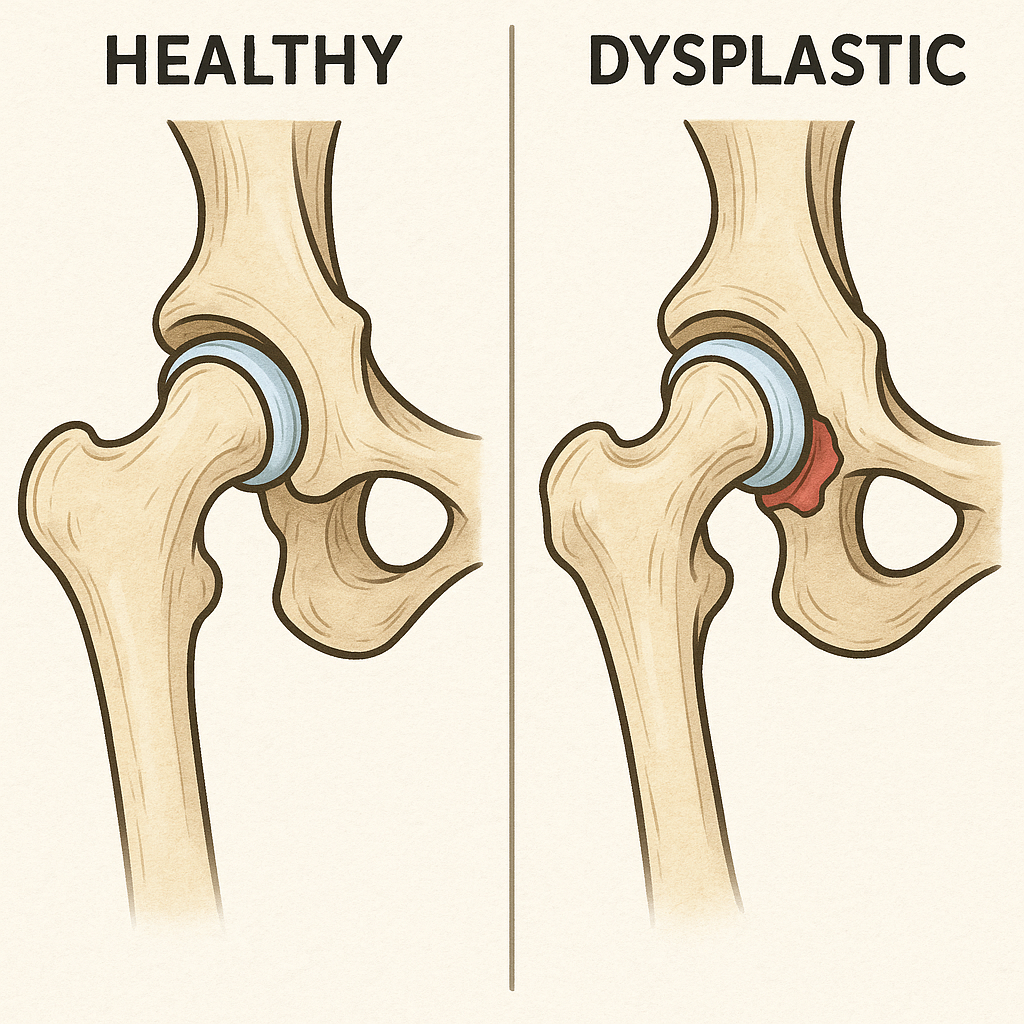
Canine hip dysplasia is a developmental condition where the hip joint—the ball (femoral head) and socket (acetabulum) doesn’t form properly. Instead of a snug fit that allows smooth, stable motion, the joint becomes loose or unstable. This abnormal movement wears down cartilage over time, leading to pain, inflammation, and eventually arthritis.
In a healthy dog, the hip joint functions like a well-oiled hinge. But in dogs with canine hip dysplasia, that hinge grinds instead of glides. The result? Chronic pain and reduced mobility.
I once treated a seven-month-old Bernese Mountain Dog named Louie who came in with a “bunny-hop” gait. X-rays confirmed early signs of canine hip dysplasia, and we started joint supplements and weight control immediately. He’s now three years old, pain-free, and still chasing balls just not up the stairs anymore.
This condition typically starts in puppyhood as the skeleton develops, but signs might not show until adulthood. While it’s especially common in large breeds, canine hip dysplasia can occur in any dog, including mixed breeds and even some smaller dogs.
Causes and Risk Factors

The primary driver behind canine hip dysplasia is genetics. Dogs inherit the condition from their parents, which is why it’s common in certain breeds. However, environmental factors play a critical role in how severely the disease develops.
Key Causes of Canine Hip Dysplasia
- Genetics: The most significant risk factor. If one or both parents had canine hip dysplasia, the offspring are much more likely to develop it.
- Rapid Growth: Feeding large-breed puppies diets too high in calories or calcium can accelerate bone growth, worsening joint laxity.
- Obesity: Extra weight puts excessive pressure on the hip joints, speeding up cartilage wear.
- Improper Exercise: High-impact activities (jumping, hard-surface running) in growing puppies can damage immature joints.
- Hormonal Factors: Early spay/neuter, especially before 6 months, may impact bone development and is being studied for its potential link to canine hip dysplasia.
Breeds at Higher Risk
Certain breeds are genetically predisposed to canine hip dysplasia. These include:
| High-Risk Breeds |
|---|
| German Shepherds |
| Labrador Retrievers |
| Golden Retrievers |
| Rottweilers |
| Saint Bernards |
| Great Danes |
| Bernese Mountain Dogs |
| Newfoundlands |
Even mixed-breed dogs can be affected. If your pup is a mix of any of the above, proactive screening is still important.
By understanding these risk factors, you can take early steps to reduce your dog’s chance of developing canine hip dysplasia or to catch it early when intervention works best.
Symptoms to Watch For
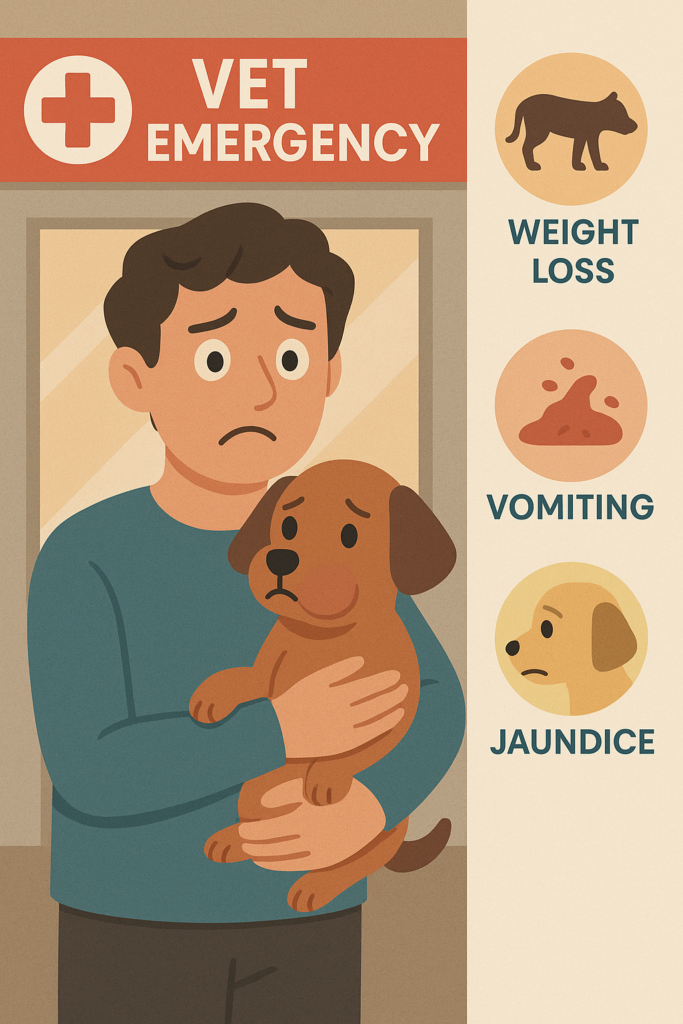
One of the challenges with canine hip dysplasia is that symptoms vary widely. Some dogs show signs as early as 4 to 6 months old, while others hide the pain until arthritis sets in years later. Regular vet checks are essential especially if you have a high-risk breed.
Common Signs of Canine Hip Dysplasia
- Limping or lameness, especially in the hind legs
- Difficulty rising from a lying or sitting position
- Reluctance to run, jump, or climb stairs
- Swaying or “bunny-hopping” gait
- Muscle loss in the thighs
- Pain or stiffness in the hips
- Clicking or grinding noise from the joints
- Reduced activity or irritability
Some dogs with severe canine hip dysplasia may show no visible signs. In my clinic, I’ve seen senior dogs with barely noticeable limps reveal advanced dysplasia on X-rays.
5-Minute Home Checklist
If you suspect canine hip dysplasia, run through this quick checklist at home:
✅ Does your dog limp after exercise?
✅ Has your dog stopped jumping on furniture or into the car?
✅ Do they hesitate or struggle with stairs?
✅ Do they have a bunny-hop gait?
✅ Have you noticed muscle loss in their back legs?
✅ Does your dog flinch or resist when you touch their hips?
If you check off more than two boxes, it’s time to book a vet visit. Early detection of canine hip dysplasia can significantly improve your dog’s outcome.
Diagnosing Hip Dysplasia in Dogs
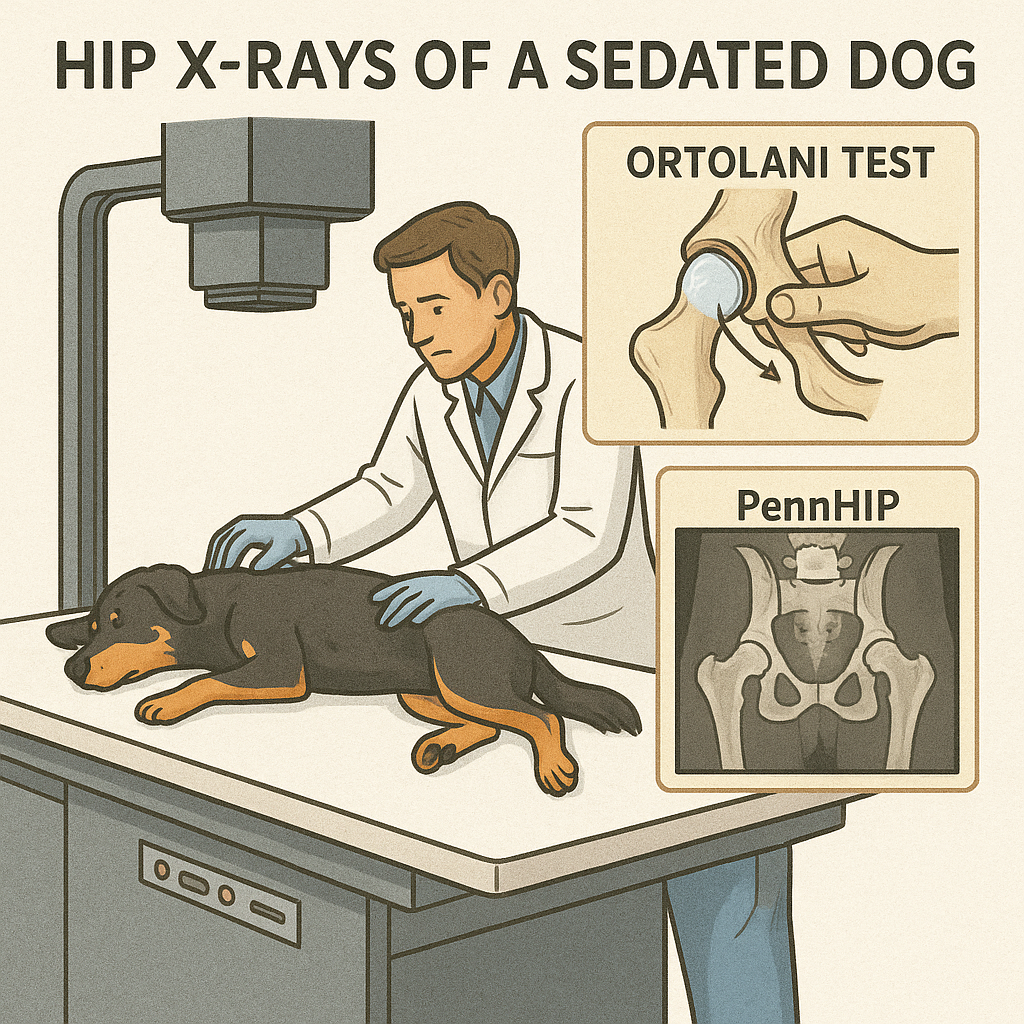
Getting a proper diagnosis is essential if you suspect your dog may have canine hip dysplasia. While symptoms provide important clues, only a vet can confirm the condition through physical exams and imaging.
American College of Veterinary Surgeons (ACVS): Canine Hip Dysplasia
Veterinary Diagnostic Steps
- Physical Examination
Your vet will assess gait, hip range of motion, and signs of pain. The Ortolani test, commonly used for puppies, checks for joint laxity. - X-rays (Radiographs)
Sedated X-rays remain the gold standard for diagnosing canine hip dysplasia. They reveal joint looseness, arthritis, and bone changes. X-rays are usually done around 6–12 months of age in at-risk breeds or when signs appear. - PennHIP Imaging
A specialized, highly accurate X-ray technique that measures joint laxity and predicts arthritis risk. It can detect canine hip dysplasia in puppies as young as 16 weeks. Not all clinics offer it, and it’s more costly, but well worth it for breeders and early planning. - Other Tools
Bloodwork or CT scans may help rule out other conditions or assess arthritis severity.
Typical Canadian Costs for Diagnosis
| Service | Cost Range (CAD) |
|---|---|
| Standard Hip X-rays | $300–$600 |
| Sedation or Anesthesia | Included/+$100–$200 |
| PennHIP Evaluation | $600–$1,000+ |
| Specialist Referral | $200–$400 |
If you suspect canine hip dysplasia, don’t delay. Early diagnosis allows for less invasive treatment and better long-term results.
Treatment Options for Canine Hip Dysplasia
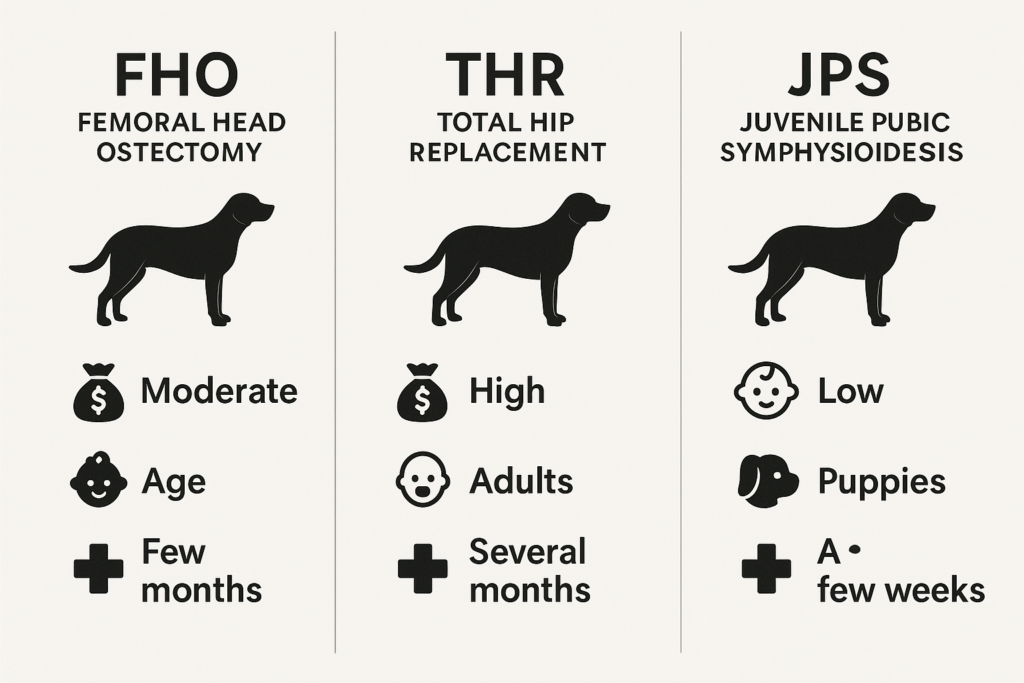
Treatment for canine hip dysplasia depends on your dog’s age, weight, symptoms, and overall health. Options range from conservative management to advanced surgical procedures. Many dogs do well with a combined approach tailored to their needs.
Conservative (Non-Surgical) Management
This is usually the first step for mild to moderate cases or when surgery isn’t feasible.
- Weight Management
Keeping your dog lean is one of the most important ways to reduce joint stress. I always advise owners to aim for a visible waist and ribs that can be felt but not seen. - Exercise Modification
Avoid high-impact activities. Instead, focus on leash walks, gentle play, and swimming (great for muscle without joint strain). - Pain Relief Medications
Vets often prescribe NSAIDs like: - Joint Supplements
Products like glucosamine, chondroitin, and omega-3 fatty acids (fish oil) may support cartilage health. - Physical Therapy
Rehab clinics offer hydrotherapy, laser therapy, and therapeutic massage. These are excellent for improving range of motion and reducing pain in canine hip dysplasia patients. - Alternative Therapies
Acupuncture, chiropractic care, and even CBD oil are being used with varied results. Talk to your vet about what’s evidence-based for your dog.
Surgical Options for Severe Cases
When conservative methods fail or arthritis is advanced, surgery becomes the most effective way to restore mobility and comfort.
| Surgery | Age/Size Suitability | Notes |
|---|---|---|
| Juvenile Pubic Symphysiodesis (JPS) | 10–18 weeks (pre-symptomatic pups) | Minimally invasive. Alters pelvis growth. Needs early detection. |
| Double/Triple Pelvic Osteotomy (DPO/TPO) | <10 months, no arthritis | Repositions the socket to improve fit. Requires early screening. |
| Femoral Head Ostectomy (FHO) | Any age, <70 lbs | Removes the ball of the hip joint. False joint forms. Best for small dogs. |
| Total Hip Replacement (THR) | >12 months, any size | Gold-standard. Replaces the entire joint. Very effective for pain relief. |
Canadian Surgery Cost Estimates
| Procedure | Average Cost (CAD) |
|---|---|
| JPS | $1,500–$2,000 |
| DPO/TPO | $3,000–$5,000 |
| FHO | $1,800–$3,000 |
| THR | $5,000–$8,000 (per hip) |
In my practice, I’ve seen dramatic improvement after THR. One of my patients, an 8-year-old Lab named Finn, went from barely walking to hiking again six months post-op.
Living with a Dog with Canine Hip Dysplasia

While canine hip dysplasia is a lifelong condition, many dogs continue to live happy, active lives with the right management. Adjustments in your dog’s lifestyle and home environment can make a big difference in their comfort and quality of life.
Daily Care Tips
- Maintain Ideal Weight: Even a few extra pounds can worsen symptoms. Use slow feeders and measure food portions to avoid overfeeding.
- Supportive Bedding: Orthopedic dog beds reduce pressure on joints. Avoid letting your dog sleep on cold, hard floors.
- Ramp Access: Use ramps or stairs to help your dog get onto furniture or into the car, reducing joint strain.
- Regular Low-Impact Exercise: Gentle leash walks, swimming, and indoor games help maintain muscle without overloading hips.
- Massage and Warm Compresses: These can relieve stiffness, especially in the morning or after naps.
Post-Surgery Considerations
If your dog undergoes surgery for canine hip dysplasia, follow your vet’s recovery plan closely:
- Limit activity for 4–6 weeks post-op
- Attend all follow-up appointments
- Incorporate physiotherapy into recovery
- Gradually reintroduce walking and gentle play
Finn, the Labrador I mentioned earlier, had a total hip replacement at age 8. With proper rehab, he regained full mobility and returned to his daily trail walks within six months.
Long-Term Outlook
Prognosis depends on the severity of the condition and the chosen treatment. Dogs managed with weight control, NSAIDs, and physical therapy can live full lives, although they may need lifelong support.
With surgery especially THR many dogs regain near-normal function and remain pain-free for years. Regular vet checkups every 6–12 months are important to adjust treatment as needed.
Prevention Tips for Canine Hip Dysplasia
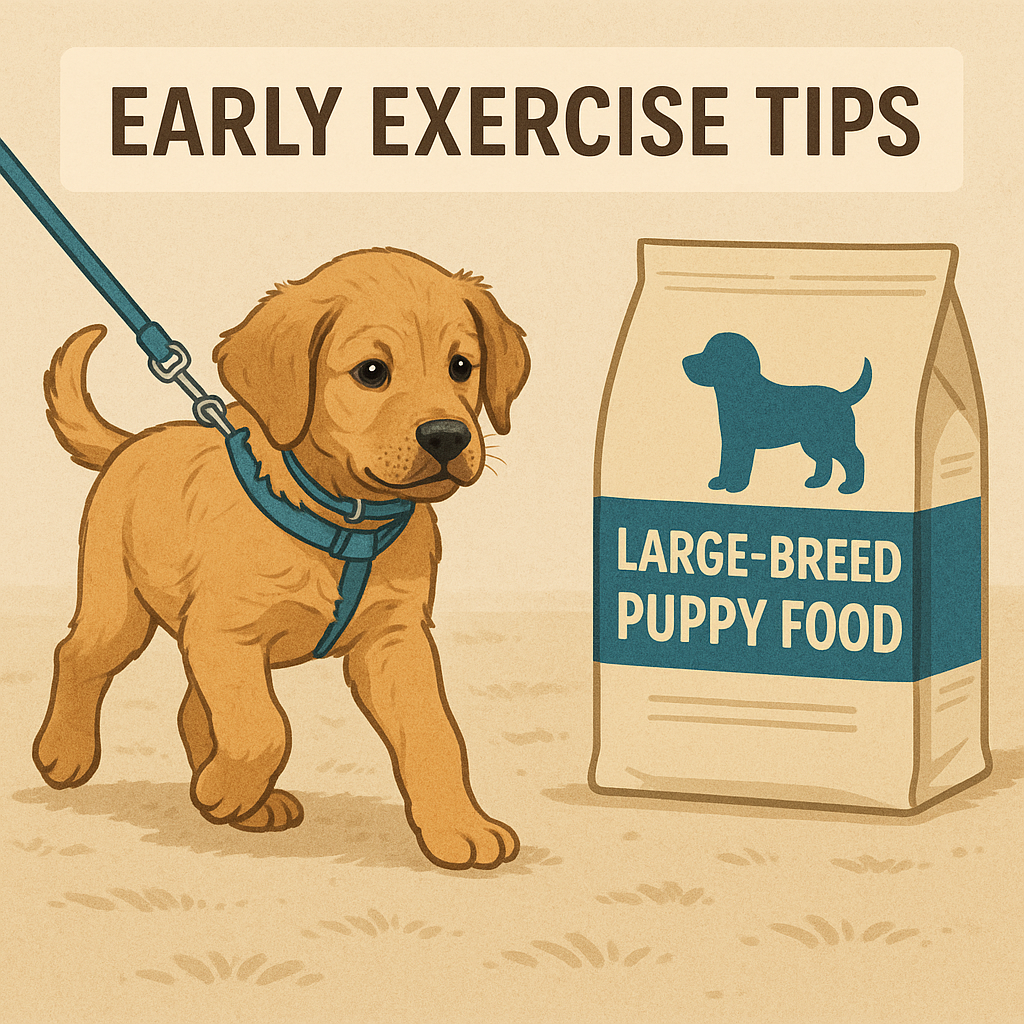
While you can’t completely prevent canine hip dysplasia, you can reduce your dog’s risk and slow the progression of the disease with a few smart strategies.
1. Choose Responsible Breeders
Reputable breeders screen both parents for canine hip dysplasia using OFA or PennHIP evaluations. Always ask for hip scores before purchasing a puppy.
2. Feed for Controlled Growth
Large-breed puppies should eat diets formulated for their size and age. Avoid overfeeding and don’t supplement calcium unless instructed by your vet. Measured meals help maintain a steady, healthy growth rate.
3. Avoid High-Impact Exercise in Puppies
Until your puppy’s growth plates close (12–18 months), avoid long-distance running, jumping on hard surfaces, or rough play. Stick to soft ground walks and short play sessions.
4. Monitor Weight Closely
Obesity is a major aggravating factor in canine hip dysplasia. Keep a visible waistline and ensure ribs can be felt under a thin fat layer.
5. Consider Spay/Neuter Timing
Emerging research suggests early spay/neuter may increase joint disorder risk in large breeds. Discuss ideal timing with your vet, especially if you have a dog predisposed to canine hip dysplasia.
6. Early Screening
If your dog is high-risk, talk to your vet about PennHIP testing between 4–6 months of age. If diagnosed early, your dog may benefit from preventative surgery like JPS before symptoms develop.
These prevention strategies can go a long way toward protecting your dog from the pain and costs associated with canine hip dysplasia later in life.
Breeds Prone to Canine Hip Dysplasia

Some breeds are more likely to develop canine hip dysplasia due to genetics and size. If your dog belongs to one of these breeds, early screening and prevention are essential.
High-Risk Breeds for Canine Hip Dysplasia
| Large & Giant Breeds | Medium & Small Breeds |
|---|---|
| German Shepherds | French Bulldogs |
| Labrador Retrievers | Cocker Spaniels |
| Golden Retrievers | Pugs |
| Rottweilers | American Staffordshire Terriers |
| Bernese Mountain Dogs | |
| Great Danes | |
| Saint Bernards | |
| Newfoundlands |
Mixed breeds can also inherit the condition, especially if one or both parents are from high-risk breeds.
What to Do If Your Dog Is at Risk
- Schedule early veterinary evaluations (starting at 16 weeks)
- Maintain a healthy weight from puppyhood
- Choose low-impact activities
- Use breed-specific food formulas for joint support
- Talk to your vet about imaging and joint supplements early on
Knowing your dog’s breed risks can help you catch canine hip dysplasia before it affects their quality of life.
FAQs About Canine Hip Dysplasia
1. What is the earliest age dogs can show signs of canine hip dysplasia?
Puppies as young as 4 to 6 months may show early signs, especially in large breeds. Look for limping, a bunny-hop gait, or difficulty rising after rest.
2. Can small dogs get canine hip dysplasia too?
Yes. While more common in large breeds, small dogs like French Bulldogs and Pugs can also develop canine hip dysplasia, though symptoms may be subtler.
3. Is canine hip dysplasia painful for dogs?
It can be. Some dogs tolerate it well, while others experience chronic pain, stiffness, and mobility issues. The discomfort typically worsens as arthritis sets in.
4. Can my dog live a normal life with canine hip dysplasia?
Yes, especially with early diagnosis and good management. Many dogs respond well to weight control, medications, and physiotherapy. Others do well after surgery.
5. How can I tell if my dog’s limp is from hip dysplasia or something else?
A veterinary exam and X-rays are the only way to confirm canine hip dysplasia. Limping can also be caused by soft tissue injuries, knee problems, or back issues.
6. What’s the best food for dogs with hip dysplasia?
Look for large-breed formulas with joint support nutrients like omega-3 fatty acids and glucosamine. Ask your vet for brand recommendations based on your dog’s needs.
Conclusion
Canine hip dysplasia can be a daunting diagnosis, but it’s not a life sentence. With early intervention, tailored treatment, and regular veterinary care, most dogs go on to live full, active lives. Whether you’re managing a senior dog’s mobility or making decisions for a young puppy, staying informed is your best tool.
I’ve helped countless pet parents navigate this condition whether it’s advising on supplements, guiding post-op recovery, or preventing issues in at-risk breeds. What matters most is being proactive. Watch for the signs, keep your dog at a healthy weight, and never hesitate to ask your vet about imaging or referral options.
The key to managing canine hip dysplasia is teamwork between you, your dog, and your veterinary team.

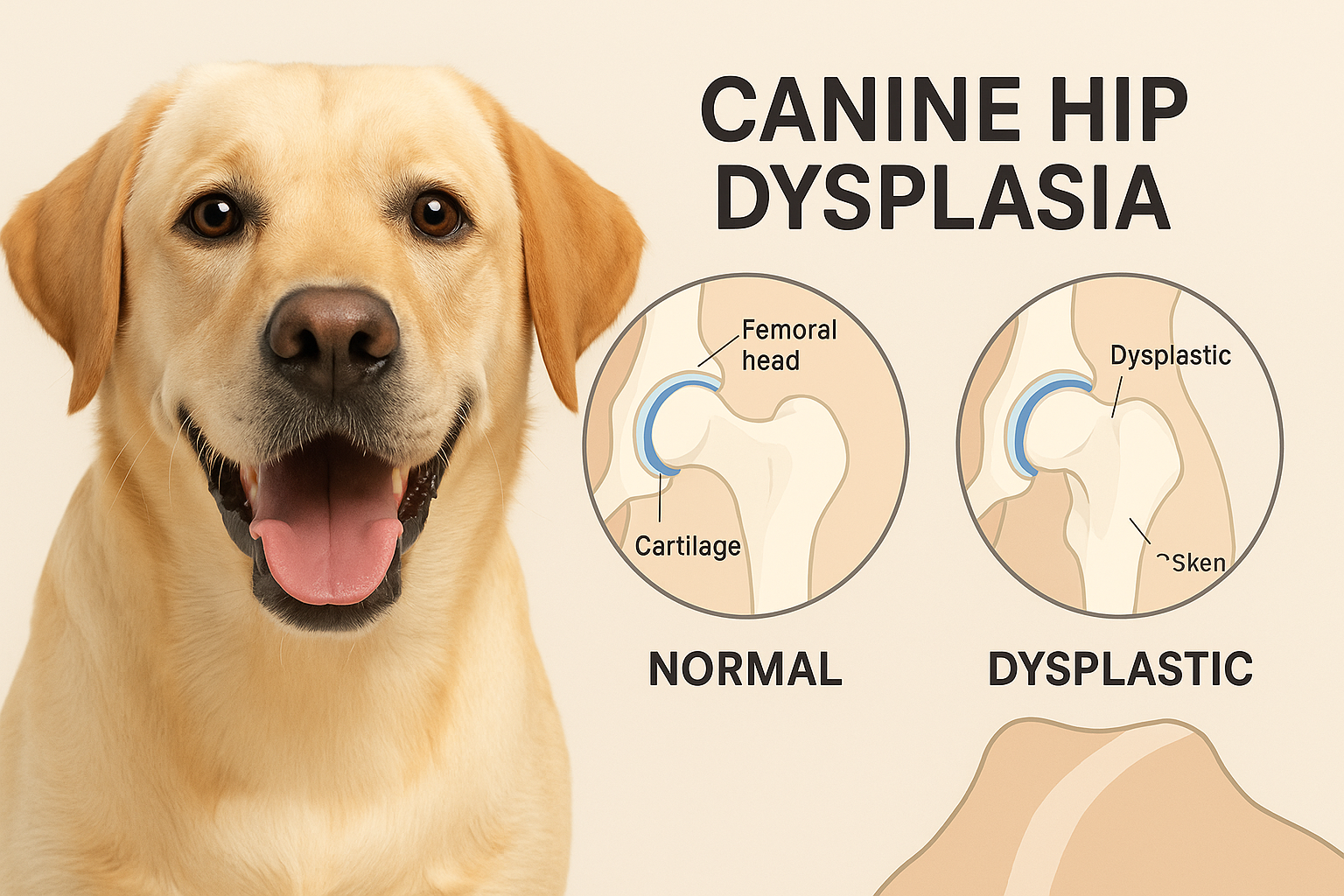



Pingback: 5 Proven Solutions for Dog Anxiety: Vet-Approved Signs & Causes
Pingback: When to Neuter Your Dog? (2025 Vet Guide): Best Age, Breed